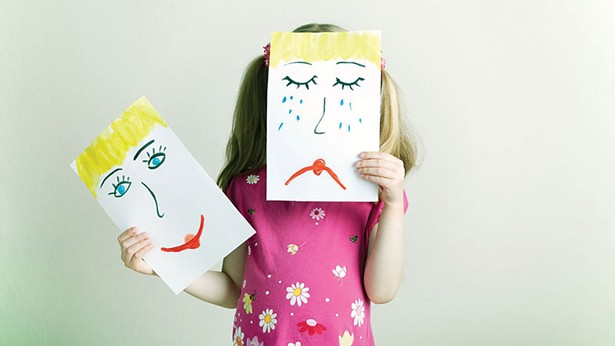New York State now mandates schools to include mental health education in their curriculum—here's what you need to know about the pioneering law.
In the wake of the Parkland school shooting in February, the Federal School Safety Commission, under the leadership of Secretary of Education Betsy DeVos, spent the summer holding listening sessions and panel discussions. Building security, threat assessment, and schools as "hardened targets" dominated much of the conversation. High-profile debates focused on arming teachers and balancing threat awareness with student privacy concerns.
Encouragingly, the commission also held a field hearing in Adams, Wisconsin, to learn what a trauma-informed school mental health structure looks like. Wisconsin educators are trained in a continuum of care, from early identification of issues to long-term interventions, and provide it on-site; everyone in the building, cafeteria staff included, is trained in mental health first aid.
The intersection between safety and mental health can be a tricky conversation. People facing mental health challenges are 10 times likelier to be the targets of violence than to be violent. Mental health professionals, especially those who work with youth, dread broad-brush conceptions that paint their clientele as the problem. They're not; only four percent of mass shooters have been diagnosed with major mental illnesses such as bipolar disorder, schizophrenia, or clinical depression. Symptoms of anger, alienation, and substance abuse are another story, though, and it is rare for the situation to arise overnight.
"If someone is coughing and sneezing, we all know what to do—keep a little distance, wash our hands," says Lauren Bennett, chief program officer at Green Chimneys, a therapeutic and educational community based in Brewster. "But many of us have no idea how to react when we see unexpected tears or anger besides look away. There's still a popular conception that mental illness means you're standing on the corner drooling in a tinfoil hat, ranting at a signpost. Meanwhile, almost no one gets through childhood unscathed; good outcomes are about having the resources and coping skills to handle what you're handed." Half of all major mental health disorders begin before the age of 14, but stigma and lack of understanding mean a delay of years before treatment is even attempted. And while only about one in 20 people develop a serious mental illness, about one in five experience some form of mental illness in their lives.
A State Mandate
Most discussion of mental health in school focuses on the student as object of care and intervention. New York and Virginia have just become the first two states to take a deceptively simple step toward empowering the kids themselves: mandating mental health education as part of the health curriculum alongside physical hygiene, nutrition, and substance abuse."We're not talking about teaching kids Psych 101," says John Richter, director of public policy for the New York State Mental Health Association. "We're giving them a tool kit: the knowledge and information to recognize signs and symptoms in themselves and others, how substance use can be self-medication, debunking the stigma that having a problem makes you wrong or broken."
The law was passed in 2016, adopted by the Board of Regents in May of this year, and came into effect on July 1. Richter says it was the MHA's primary legislative focus for five years. "We got some pushback from NYSUT [the New York State teacher's union] at first, but it was just reflexive, because there are never enough hours in the day as it is," he says. "But educators are desperate for help and beside themselves with what they're seeing in their students. They might have one social worker helping them with 1,500 students."
To help schools with the implementation of the new mandate, Richter and his colleagues worked with an advisory council made up of "educators, mental health professionals, school nurses, guidance counselors, teachers—pretty much every role in the school," he says. "We came up with guidelines, parameters, and resources that schools can draw upon. There is no single mandated curriculum. Consistent with the way a lot of education is done, the details are locally determined with some help from the state."
The MHA, with the help of $1 million in funding from the legislature, has established an online School Mental Health Resource and Training Center offering programs, resources, lesson plans, and a discussion forum. Richter says the MHA stands ready to offer guidance in real time. "We're available to them by phone and in person for trainings and presentations," he says. The agency is also holding a series of summits on youth mental health first aid.
With the advisory council, New York's Education Department has produced a 79-page document outlining their expectations for teaching "self-management, relationships, and resource management" across all grade levels. The New York State Framework for Mental Health Education Instruction includes concepts such as mindfulness, communication strategies, healthy self-expression, and the benefits of gratitude as part of health instruction beginning in the early elementary grades and reinforced in greater depth up through high school graduation.
A Focus on Mental Hygiene
Of half a dozen Hudson Valley school superintendents contacted, not one responded to a request for more information on how they planned to implement the new mandate. Some districts have had mental health literacy among their goals for years; New Paltz, for example, has already been teaching mental, social, and emotional health beginning in grade 5, and resources for self-care and helping others after a trauma are featured on the district homepage. Newburgh's high school health electives include a course "founded on the principles of wellness" that covers personality development, but the words "mental illness" are mentioned only in the description of a health elective course on criminal justice.It's hardly a brand new notion. The Department of Superintendents of the National Education Association established in 1928 that "mental hygiene must be emphasized and protected." Much more recently, tactics like mindfulness and conflict resolution skills have made inroads in public school instruction. What mental health professionals are hoping is that by placing mental wellness on a par with eating right and washing your hands, the stigma will finally be vanquished.
"You just can't have health—or learning—without mental health," observes Ellen Pendegar, CEO of the Ulster County Mental Health Association. "This needs to be understood as just another part of the human condition, a normal part of staying healthy like sleeping well. We're proud that we got this legislation, but we take very seriously our responsibility to help the schools. We're not asking teachers to become therapists. We're here for them. They have so many demands on them already, but that's where the youth are, and if somebody can get help to integrate and be well, it'll make the teacher's job easier, not more difficult. They'll have better students. Better citizens. A lot of good people really, really want this to happen, because it's a win/win for the whole human race."
"Mental health is not just about chronic conditions, it's about knowing how not to let the negative things that happen define you, how to ask for help with thoughts and feelings," says Bennett. "The link between trauma and poor health has been proven repeatedly; when we intervene early and correctly, we save lives and millions of dollars. Thing is, when we blame the people with health issues that show up as behaviors, as if they're just choosing to be maladapted, we can pretend it's not us, not part of our lives. Empathy is painful. But we need to start asking, 'What happened to you?' instead of 'What's wrong with you?' Whether it's genetics, environment, or trauma, we have to stop blaming people who are sick and give them tool kits and assistance. Teaching kids to understand that in a matter-of-fact way is a major step in the right direction."


















